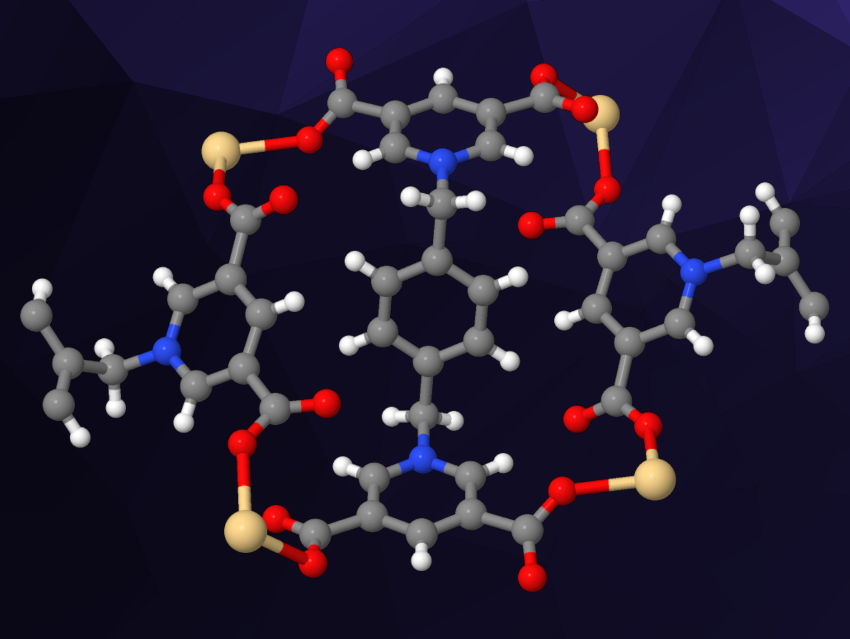Triboelectric nanogenerators (TENGs) can transform mechanical energy into electrical energy through the triboelectric effect. The triboelectric effect is a phenomenon in which certain materials become electrically charged after they are separated from a different material with which they were in contact. It is often the cause of the static electricity we experience in everyday life. TENGs send this electricity through a circuit to power a device. However, they usually have a low power output, which hampers their practical use.
Zhichao Shao, Zhongyuan University of Technology, Zhengzhou, China, Hongwei Hou, Zhengzhou University, China, and colleagues have developed a 3D nanocrystalline Cd-based metal–organic framework (MOF) that could be used as a high-performance triboelectric positive electrode material. The team prepared the MOF (structure detail pictured) from Cd(NO3)2·4H2O and a twisted organic ligand with four carboxyl groups in N,N-dimethylformamide (DMF) and water, using ultrasonication.
The resulting MOF nanocrystals were used to coat a conductive copper foil, forming the positive electrode material for the TENG. The negative electrode material was prepared from polyvinylidene fluoride (PVDF) powder, which was dissolved and spin-coated onto a polymer film. The resulting TENGs showed high power densities and stable outputs. According to the researchers, the nanocrystalline MOF particles provide a high surface area, which improves TENG performance. The device can, for example, quickly charge commercial capacitors or power a large number of LED lights.
- 3D nanocrystalline metal–organic framework materials for the improved output performance of triboelectric nanogenerators,
Kexin Gao, Junshuai Chen, Mengting Zhao, Rentang Hu, Shiheng Chen, Xiaojing Xue, Zhichao Shao, Hongwei Hou,
Dalton Trans. 2022.
https://doi.org/10.1039/D2DT03477H


